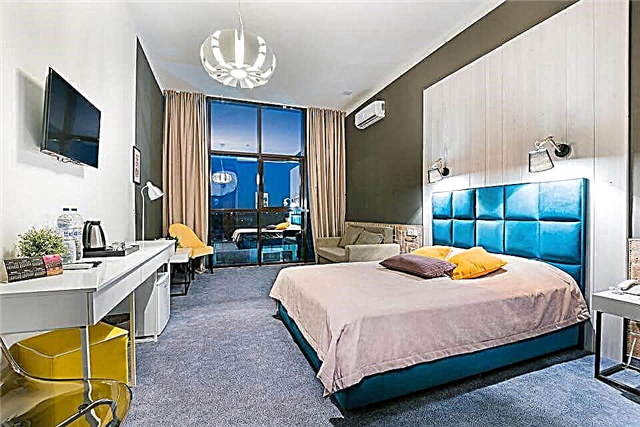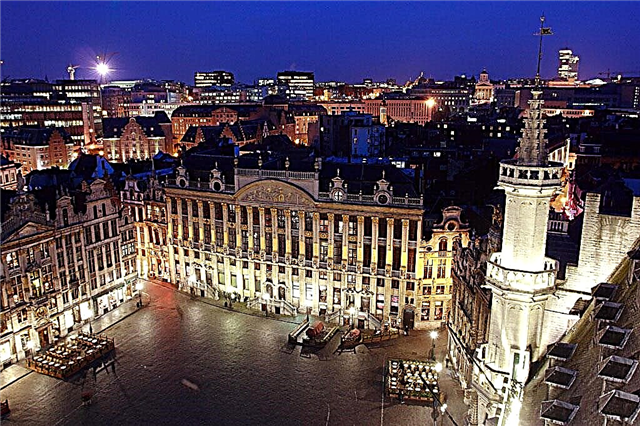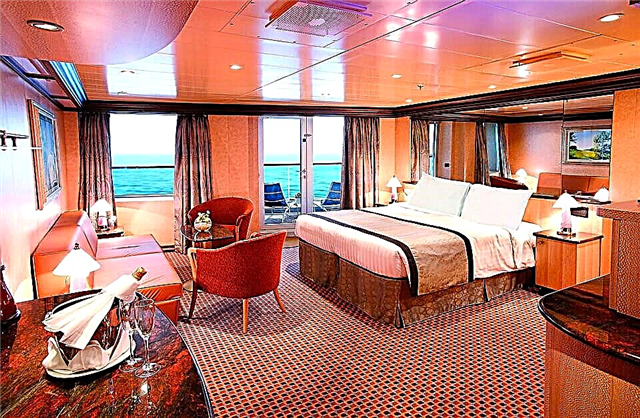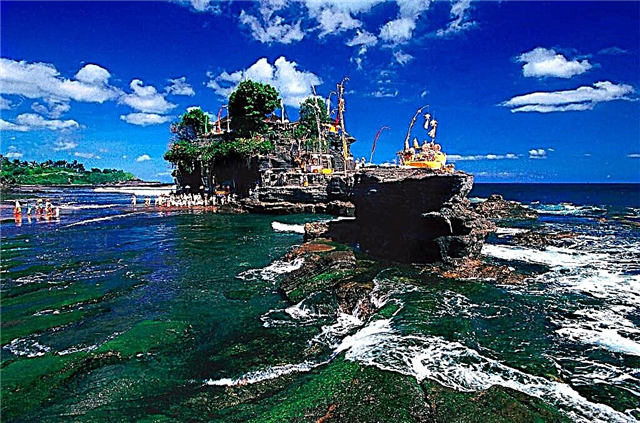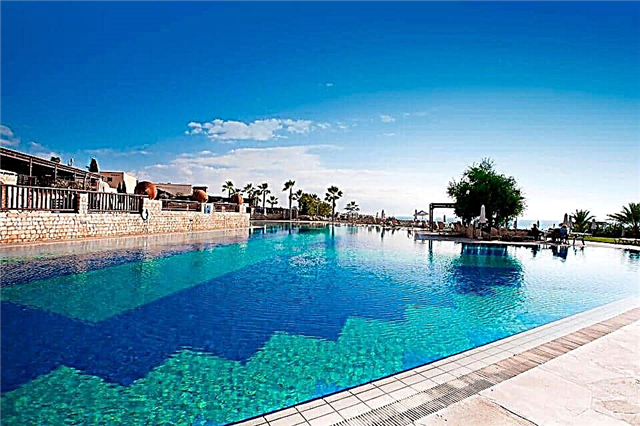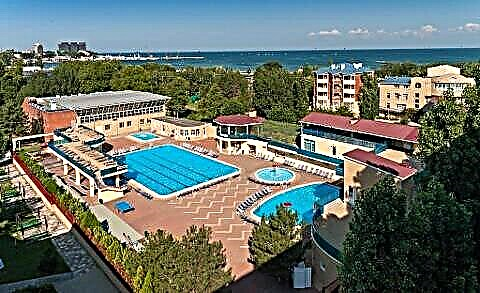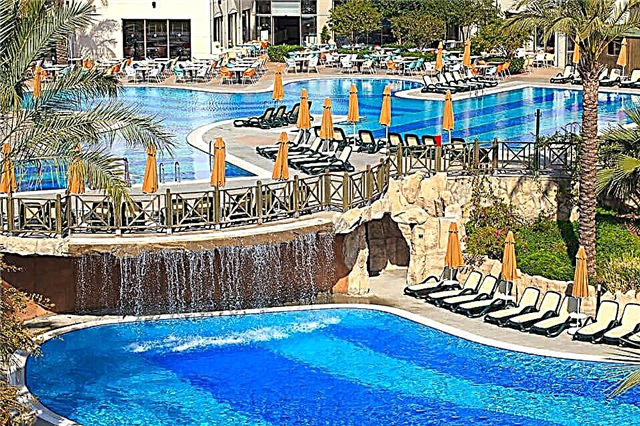The city quarters of Ivanovo, among which this church stands, were formerly called Dmitrovskaya Sloboda. And even now the townspeople say - on Dmitrovka. The temple is rightfully considered one of the most beautiful in the regional center. The picturesque five-domed church and high bell tower are perfectly integrated into the urban landscape. However, many dramatic events took place in the history of this temple. In the mid-70s of the last century, the church dedicated to the icon of the Most Holy Theotokos "Joy of All Who Sorrow" was blown up. And for almost two decades in its place there was an undeveloped wasteland.
Temple history
By the end of the 1820s, on the western outskirts of Ivanovo, the Dmitrovskaya Sloboda or Dmitrovka, as the residents themselves called it, had formed. The land on which the construction began was formerly owned by Count Vorontsov. But the rich merchants from Shuya, the Kornaukhov brothers, bought large plots of land from the count and built the first house in the settlement for their families. The Uvod River separated Dmitrovka from Voznesensky Posad. To the south of the settlement was the village of Golenishchevo, which was owned by Count Sheremetyev... And to the west of Dmitrovka stretched the lands where the state peasants from the village of Kuryanovo were farming.

General view of the Sorrowful Church
The merchants of the Kornaukhovs became rich, having made a considerable fortune on the trade of mosquito goods. So in the old days they called household chemicals - soap, varnishes, glue, technical oils and paints. Ten years later, the Polushin and Zubkov families settled in Dmitrovka and built chintz factories here. At the same time, a chemical plant appeared on the banks of the Uvodi River, which belonged to the Moscow merchants Lepeshkins. So in a short time Dmitrovskaya Sloboda turned into one of the industrial centers of Ivanovo.
In 1879, at the expense of the owner of the chemical production N.V. Lepeshkin and the owner of the printmaker E. Menshikov, a small hipped-roof church was built here. In addition to the main altar, two chapels were consecrated in it - in honor of the supreme apostles Peter and Paul, as well as Bishop Basil of Paris. And next to the temple, a stone house was erected for the clergy.

View of the Sorrowful Church from the intersection of Kuznetsova and Rabfakovskaya Streets
In the mid-1880s, the well-known Russian educational and charitable society "The Brotherhood of Prince A. Nevsky" built a two-story brick house near the church. It housed a two-year parochial school. Here they trained teachers for parish schools, in which illiterate townspeople were taught reading, writing and the basics of counting. A little later, a one-story building for a women's almshouse, built by the architect Sergei Viktorovich Napalkov, appeared next to it.
Time passed, at the very beginning of the 20th century, a tent-roofed bell tower decorated with kokoshniks was erected near the temple. This was done according to the project of the provincial architect Pyotr Gustavovich Begen, and with the money allocated by the manager of the chemical plant A.S. Konovalov. It was after this that the temple finally regained integrity. The residents of the city liked the beautiful church very much and served as a real spiritual center for Ivanovo-Voznesensk. This was largely the merit of the active priest of the temple - Vasily Yakimansky, who served here from the opening of the church until 1903.

View of the Sorrowful Church from Kuznetsova Street
With the advent of Soviet power, the life of the temple has changed in many ways. Immediately after the revolution, a check was carried out inside the building and many valuables were found, which Ivanovo manufacturers and merchants tried to save from confiscation. The outraged authorities opened a criminal case against the church community, and the then priest of the church, Vladimir Kalliopin, and the church elder were arrested.
In the 20s of the last century, the temple, like many other churches of Ivanovo, was given to the community of the Renovation Church, loyal to the Soviet state. Although the Renovationists were 8 times less than the supporters of traditional Orthodoxy, supporting Patriarch Tikhon.

View of the northern facade of the Sorrow Church
After 10 years, one side-altar of the temple was leased to the Josephite community. By the end of the 1920s, part of the believers in Russia, under the leadership of Metropolitan Joseph, separated from the main nucleus of the church. Joseph's Orthodox Christians refused to recognize the authority of Metropolitan Sergius, who in those years was the head of the Russian Orthodox Church. But this community also stayed in Ivanovo for only a few months. Its members petitioned for the return of the temple, as, due to lack of funds, they could not support the church and pay taxes. The temple was closed and a warehouse was placed in it. And in 1937, Metropolitan Joseph was arrested by the authorities and shot.
The long-suffering Sorrowful Church for about 40 years stood empty and ownerless. In 1942, believers unsuccessfully tried to regain this temple and sent petitions to the regional executive committee. But their aspirations were never heard.

View of the southern facade of the Sorrow Church
Years passed, and everywhere the attitude of the state towards the church changed. Launched in the 1920s, however, the flywheel of anti-church vandalism was not easy to stop. At the very end of December 1976, shortly before the centenary of the church, a terrible event took place. The Sorrowful Church was blown up. It became the last religious building destroyed in Ivanovo by the decision of the local authorities. Even a photograph has survived, which captures the moment of the explosion - scattering clouds of smoke and dust, the overturning bell tower and the collapsing walls of the building.
The place where the temple stood was planned to be given for the construction of a sports complex, since the whole country during these years was preparing for the Olympics-80. However, these plans were not destined to come true, and the builders only managed to dig a foundation pit. Then there was a big fire in the city, during which the building of school No. 33 was badly damaged. The authorities hastily transferred all the money for its restoration, and the project of the sports complex was forgotten. The dilapidated brick building of the former Cyril and Methodius School was demolished later - in 1990. And for many years the temple area remained undeveloped.

View of the domes of the Sorrowful Church
Large-scale work on the restoration of the church and the bell tower began in the city in the summer of 1997. The author of the project of the new church was the architect Alexander Vadimovich Pashkov. To begin with, a board of trustees was created, which included representatives of the Orthodox Church, scientists and local historians, as well as employees of the administration and enterprises of Ivanovo. Professional builders, students from the local Academy of Architecture and Civil Engineering, volunteers and monks worked on the revival of the temple. Nikolo-Shartom monastery... In two years, the ancient temple was completely reconstructed, but now it has not a hipped roof, as before, but a five-domed end. It is noteworthy that the Sorrowful Church was the first in the city to be reborn from scratch in its old place.
Architectural features and interior decoration of the temple

View of the Sorrowful Church and the fence from the side of Rabfakovskaya Street
The blue and white church was rebuilt in the likeness of the old temple, however, it has some peculiarities. In the modern version, the inner vaults of the two-story church lack additional supports. And this made it possible to make the temple more spacious. In addition, the new church is now taller than the old one. The newly rebuilt bell tower rises 35 m, which is comparable to the height of a twelve-story residential building. It is noteworthy that the bells for her were cast by masters from the male Nikolo-Shartom monastery. The territory of the temple is surrounded by a decorative brick fence with a gate, restored on the old foundation.
The current state of the church and the visiting regime
The temple is active, and services are held daily at 7.00 and 16.30.For a long time, the church was the courtyard of the Nikolo-Shartom monastery, and since 2013 it has the status of the Bishop's courtyard of the local diocese. The upper side-altar of the temple is consecrated in honor of the icon of the Mother of God "Joy of All Who Sorrow", and the lower one is dedicated to the Beheading of John the Baptist and John the Baptist. Patronal holidays are celebrated here on September 11 and November 6.

Entrance gate to the territory of the church
The shrine of the temple, especially revered by believers, is the two-hundred-year-old icon of the Mother of God "Joy of All Who Sorrow". The children of the parishioners have the opportunity to study at the Sunday school established at the church. And for those travelers who come to Ivanovo by their own car, it is convenient that there is a parking nearby.
How to get there
By car. On the M7 highway from the capital to Ivanovo, you can drive 4.5-5 hours (290 km). From the southern outskirts of Ivanovo in the direction of the city center for about 2.9 km, you need to go along Lezhnevskaya street. Then turn left and along the streets of Shuiskaya, Varentsova and Kuznetsova get to the temple itself. It is located near the intersection of Kuznetsova and Rabfakovskaya streets.

Church bell tower
By train or bus. From the Yaroslavsky railway station to Moscow the train reaches Ivanovo in 7 hours. The railway station is located in the central part of Ivanovo. In addition, it takes 6 hours to get from the Central Bus Station in Moscow near the Shchelkovskaya metro station to Ivanovo by direct or transit buses. The bus station in Ivanovo operates in the southern part of the city and is 6.5 km away from the railway station. You can drive up to the temple in the city by trolleybuses No. 5 and 9, as well as by shuttle buses No. 18, 36 and 43 (stop “Leningradskaya Ulitsa”).
Attraction rating:

